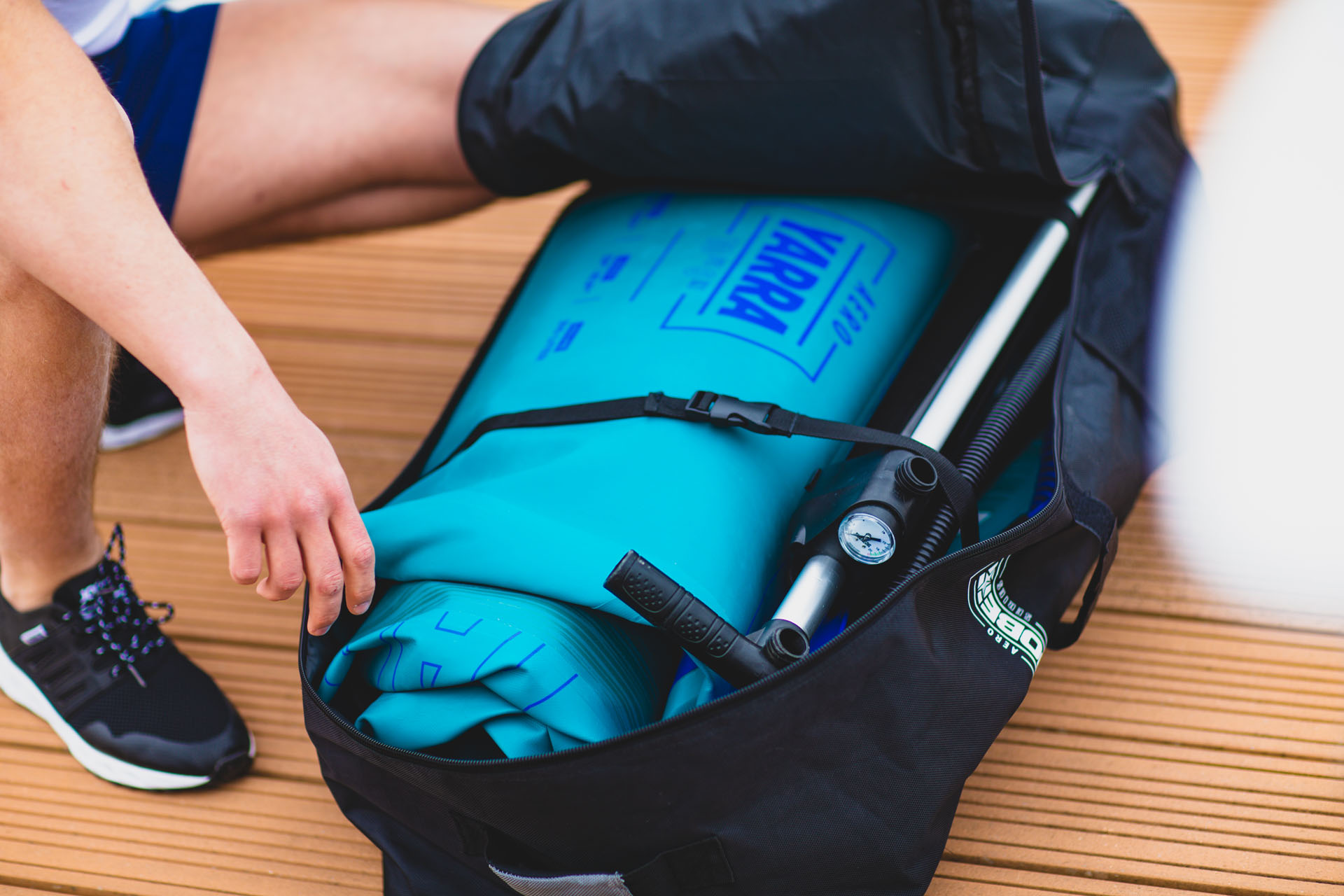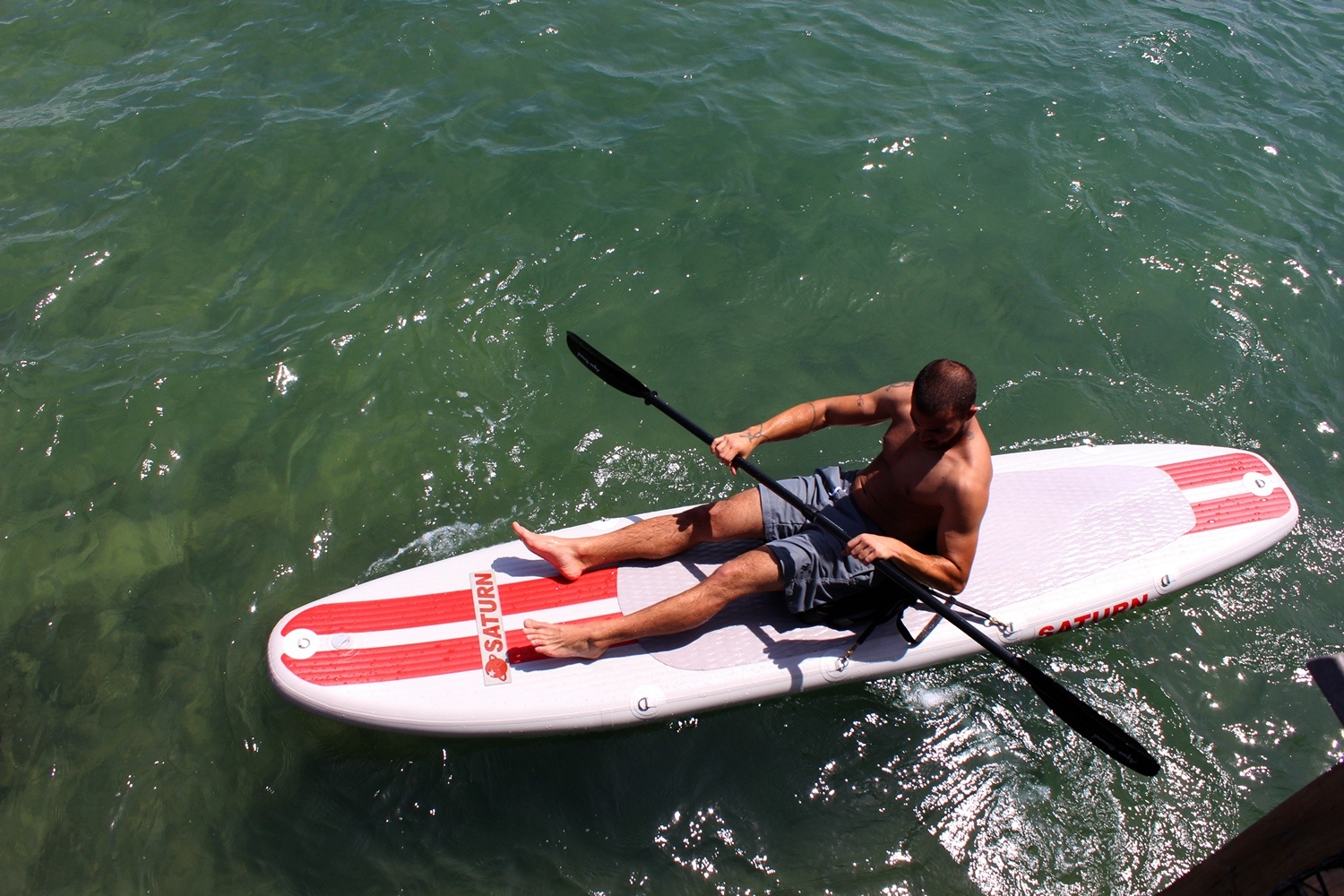If you’re considering diving into the world of stand-up paddleboarding, an inflatable paddle board might just be the perfect choice for you. Offering convenience, portability, and versatility, these boards have gained immense popularity among water sports enthusiasts. In this comprehensive guide, we’ll explore everything you need to know about inflatable paddle boards, from their benefits to how to choose the right one for your needs.
Key Takeaways
- Inflatable paddle boards are highly portable and easy to store, making them ideal for travelers and those with limited space.
- They are versatile and suitable for various water conditions and activities, including yoga, fishing, and touring.
- Choosing the right inflatable paddle board involves considering factors like size, shape, and intended use.
- Maintenance is straightforward, but regular care ensures longevity and performance.
What is an Inflatable Paddle Board?
An inflatable paddle board, often referred to as an iSUP, is a type of stand-up paddleboard that can be inflated and deflated for easy transportation and storage. Unlike traditional hard boards, inflatable paddle boards are made from durable materials like military-grade PVC, which allows them to withstand various water conditions while remaining lightweight and easy to handle.
Benefits of Inflatable Paddle Boards
Inflatable paddle boards offer several advantages over their hardboard counterparts, making them a popular choice for both beginners and seasoned paddlers. Here are some key benefits:
Portability and Storage
One of the most significant advantages of inflatable paddle boards is their portability. When deflated, they can be rolled up and stored in a backpack or a small car trunk, making them perfect for travelers or those with limited storage space.
Durability
Despite being inflatable, these boards are incredibly durable. The high-quality materials used in their construction are resistant to punctures, abrasions, and UV damage, ensuring they last for years with proper care.
Versatility

Inflatable paddle boards are suitable for a wide range of activities, including yoga, fishing, touring, and even surfing in some cases. Their stability and buoyancy make them an excellent choice for beginners and experienced paddlers alike.
Comfort and Safety
The softer surface of an inflatable paddle board is more forgiving in case of falls, reducing the risk of injury. Additionally, they provide a comfortable platform for long paddling sessions.
Choosing the Right Inflatable Paddle Board

When selecting an inflatable paddle board, it’s essential to consider several factors to ensure you choose the right one for your needs. Here are some key considerations:
Size and Weight Capacity
The size of the paddle board will affect its stability and performance. Generally, longer and wider boards offer more stability, making them suitable for beginners or those planning to carry extra gear. However, they may be less maneuverable than shorter boards. Consider your weight and any additional gear you plan to carry when selecting the board’s weight capacity.
Board Shape
The shape of the board can impact its performance in different water conditions. All-around boards are versatile and suitable for various activities, while touring boards are designed for speed and efficiency over long distances. Surf-style boards are shorter and more maneuverable, ideal for catching waves.
Thickness
Inflatable paddle boards typically range from 4 to 6 inches in thickness. Thicker boards offer more buoyancy and stability, which can be beneficial for beginners or heavier paddlers. However, thinner boards may provide better performance in terms of speed and maneuverability.
Intended Use
Consider how you plan to use your paddle board. If you enjoy yoga or fishing, look for a board with a wide deck and extra features like attachment points or a non-slip surface. For touring or racing, a streamlined board with a pointed nose will be more efficient.
Maintenance and Care
Proper maintenance and care can extend the life of your inflatable paddle board and ensure it performs at its best. Here are some tips to keep your board in top condition:
Cleaning
Rinse your board with fresh water after each use to remove salt, sand, and debris. Use a mild soap and a soft brush for more thorough cleaning, and ensure the board is completely dry before storing it to prevent mold and mildew.
Storage
Store your inflatable paddle board in a cool, dry place away from direct sunlight. Avoid leaving it inflated for extended periods, as this can cause unnecessary stress on the seams and material.
Inflation and Deflation
Follow the manufacturer’s instructions for inflating and deflating your board. Avoid over-inflating, as this can damage the seams and valves. When deflating, ensure all air is removed before rolling it up for storage.
Inflatable paddle boards offer a convenient and versatile option for water enthusiasts of all levels. With their portability, durability, and adaptability to various activities, they are an excellent investment for anyone looking to enjoy the water. By considering factors like size, shape, and intended use, you can find the perfect inflatable paddle board to suit your needs and enhance your paddling experience.
